Acourtia nana, Dwarf Desertpeony
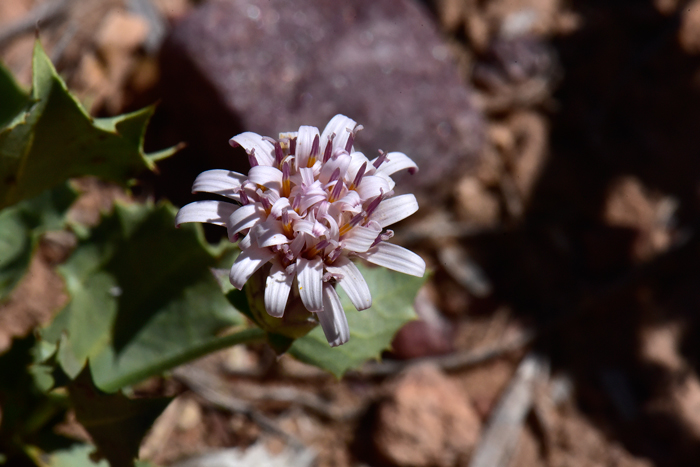
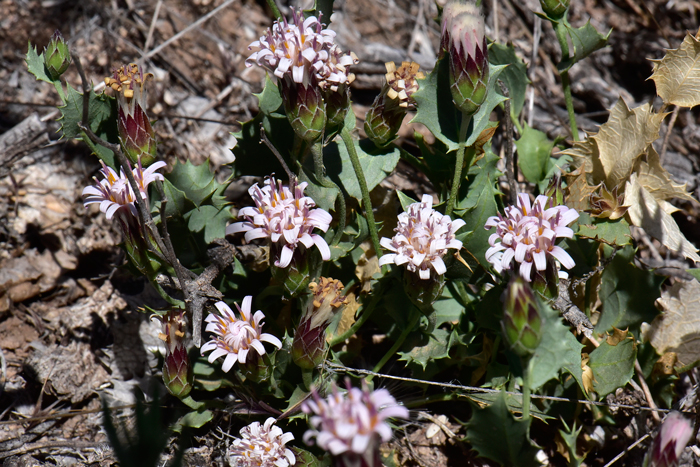
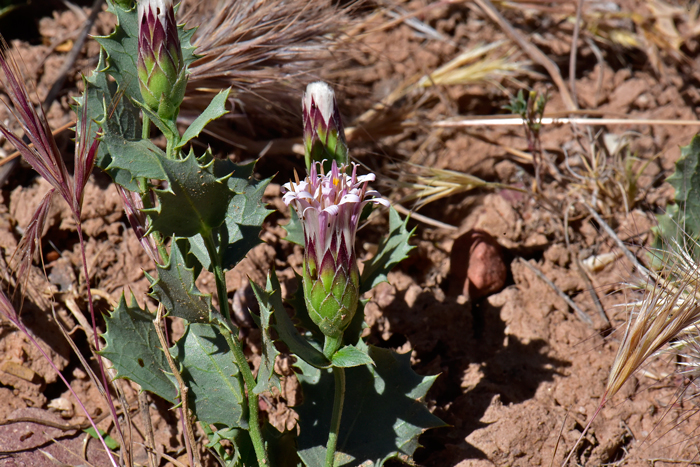
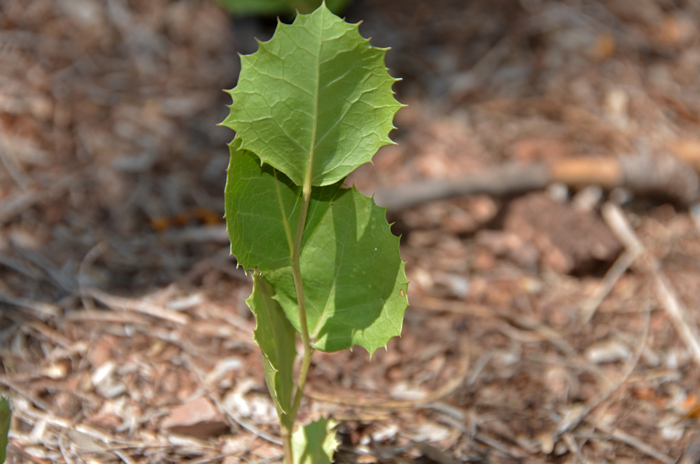
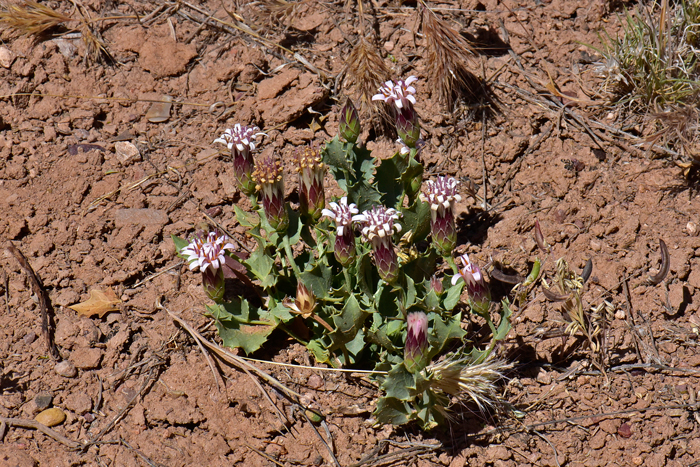
Scientific Name: Acourtia nana
Common Name: Dwarf Desertpeony
Also Called: Desert Holly, Desertpeony
Family: Asteraceae, Sunflower Family
Synonyms: (Perezia nana)
Status: Native
Duration: Perennial
Size: Small 1 to 12 inches (2.5-30 cm).
Growth Form: Forb/herb; woolly bases of brownish-bronze hairs; erect, small, dwarf and often with a single stem, additional stems are wide-spreading.
Leaves: Green; pale green, leathery, opposite; cauline leaves without a stalk (sessile) or with a very short stalk (petiole); leaf surface generally without surface ornamentation such as hairs, scales or bristles but often rough to the touch; leaves look like holly-type leaves; broadly oval; leaf edges or margins noticeably prickly-toothed.
Flower Color: White, pink or lavender-pink, flowers fragrant; flowers heads single (solitary) on tips of branches; disk florets only; the bracts surrounding the flower heads are bell-shaped (campanulate); the fruit is a cypsela with numerous slender silky hairs (pappus), silvery white to tawny.
Flowering Season: March to June and sometimes later.
Elevation: Below 6,000 feet (1,800 m).
Habitat Preferences: Lower to middle deserts, desert scrub or chaparral communities; usually under bushes; mesas, arid plains, slopes; gravel, sandstone and heavy clay or caliche soils.
Recorded Range: Dwarf Desertpeony, Acourtia nana is native to the Sonoran and Chihuahuan Desert regions of the southwestern United States and northern and central Mexico. In the United States it is relatively rare where it is found only in AZ, NM and TX. In Arizona it is found in much of the southern part of the state and Yavapai County. It is also well represented in New Mexico, less so in Texas where it is found primarily in the trans-Pecos and western Edwards Plateau.
In Mexico it is native to (Chihuahua, Coahuila, Nuevo León, San Luis Potosí, Sonora, Zacatecas).
North America & US County Distribution Map for Acourtia nana.
North America species range map for Dwarf Desertpeony, Acourtia nana:
North American range map courtesy of Virginia Tech, Dept. of Forest Resources & Environmental Conservation
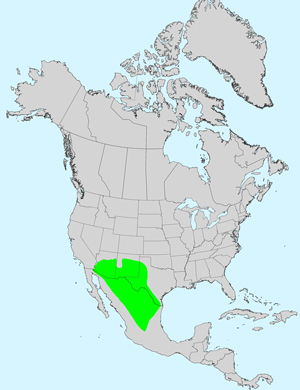
U.S. Weed Information: Unknown
Invasive/Noxious Weed Information: Unknown
Wetland Indicator: Unknown
Threatened/Endangered Information: Unknown
Genus Information: In North America there are 5 species and 5 accepted taxa overall for Acourtia. World wide, The Plant List includes 84 accepted species names and includes a further 30 of infraspecific rank for the genus.
The genus Acourtia was published in 1830 by David Don.
In the Southwestern United States: Arizona and Nevada each have 5 species of genus, California has 13 species, New Mexico has 7 species, Texas has 4 species, Utah has 6 species. Data approximate, subject to revision.
Comments: Dwarf Desertpeony is a small forb, relatively common in select areas; only a few leaves per plant; its flowers are rarely seen. Dwarf Desertpeony, or Desert Holly is often observed under the protection of bushes or trees. It has a pleasant fragrance reminiscent of jasmine or violets. Dwarf Desertpeony differs from other species of Acourtia because of its small size, leathery leaves that resemble holly leaves with tiny spines.
According to Arizona Flora, the roots of this plant and also those of Wright's Desertpeony, Acourtia wrightii yield an acid (pipitzahoic) "which may be used in chemical analysis as an indicator of soil alkalinity"
In Southwest Desert Flora also see Thurber’s Desertpeony, Acourtia thurberi and Brownfoot or Wright’s Desertpeony, Acourtia wrightii.
The genus Acourtia was published in 1830 by David Don.
The species epithet "nana" (na'na:) means "little" from the Greek nannos, "dwarf".

